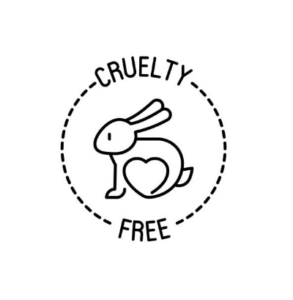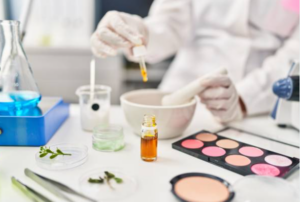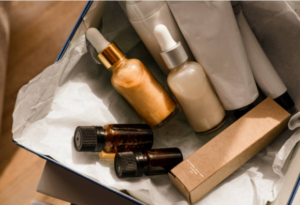Navigating the Gray Areas

In recent years, the beauty industry has seen a significant shift towards ethical and sustainable practices. Many consumers are now more conscientious about the products they use, demanding transparency in ingredient sourcing and manufacturing processes of brands. Among the crucial ethical concerns in the beauty industry, cruelty-free practices have gained prominence. Customers are increasingly seeking out products that are not tested on animals.
For a product to be considered truly cruelty-free, it must not only refrain from testing on animals but also avoid using animal-derived ingredients. Brands that meet these criteria often display a cruelty-free logo, which signifies their commitment to ethical practices. However, the beauty landscape is not always black and white, and navigating the gray areas can be challenging. In this comprehensive blog, we will explore the concept of cruelty-free beauty, the complexities surrounding it, and how to decipher whether a brand is genuinely cruelty-free or merely claiming to be.
The movement towards cruelty-free beauty is rooted in compassion and a desire for change. Traditional animal testing involves subjecting animals, primarily rabbits, mice, and rats, to potentially harmful chemicals to assess their safety for human use. It’s a practice that many find morally objectionable and unnecessary, given the technological advancements that allow for alternative testing methods.
The shift towards cruelty-free beauty gained momentum when consumers began to question the ethics behind these practices. The call for change was further amplified by advocacy groups, influencers, and celebrities who championed cruelty-free products. As a result, a growing number of brands have made the commitment to stop animal testing, marking a significant change in the industry’s landscape.
The Challenge of Defining Cruelty-Free
At first glance, the concept of cruelty-free beauty appears straightforward: products not tested on animals. However, delving deeper into the issue reveals a spectrum of complexities. To truly understand whether a brand is cruelty-free, we must consider various aspects:
1. Animal Testing Policies:
- Some brands do not test their finished products on animals but may still use ingredients that have been tested on animals in the past. This raises questions about their commitment to cruelty-free practices.
2. Parent Company Involvement:
- A brand may uphold cruelty-free principles, but if it’s owned by a larger parent company that conducts animal testing, there are ethical dilemmas. Profits from the cruelty-free brand can indirectly support animal testing.
3. Regulatory Differences:
- Cruelty-free standards vary globally. What’s considered cruelty-free in one country may not adhere to the same standards in another. This makes it challenging for consumers to navigate the international market.
4. Vegan vs. Cruelty-Free:
- A product labeled “vegan” is free from animal-derived ingredients, but it may not necessarily be cruelty-free. It could still have been tested on animals during its development.
To address these complexities, several cruelty-free certification organizations have emerged. These organizations rigorously audit brands and their suppliers to ensure they meet specific cruelty-free criteria. Some of the most recognized cruelty-free logos include the Leaping Bunny, PETA’s Beauty Without Bunnies, and Choose Cruelty-Free (CCF) Australia.
These certifications provide consumers with a reliable way to identify products that adhere to stringent cruelty-free standards. However, not all cruelty-free brands choose to go through the certification process. For some, this decision is financial, as certification can be costly. Others may be cruelty-free but have not pursued certification for various reasons.

The Gray Areas: Brands to Watch Out For
1. Brands Owned by Parent Companies That Test on Animals:
This is one of the most significant gray areas in the cruelty-free beauty landscape. Some well-known cruelty-free brands are subsidiaries of larger parent companies that continue to conduct animal testing for their other brands or regions where it’s required by law. Here’s why this is a concern:
- Profit Allocation: When you purchase products from a cruelty-free subsidiary of a non-cruelty-free parent company, you indirectly contribute to the parent company’s profits. This can create a moral dilemma for consumers who want to support truly cruelty-free brands.
- Lack of Autonomy: While the subsidiary brand may uphold cruelty-free practices, it often lacks complete autonomy over its parent company’s broader decisions. The parent company’s policies can potentially impact the subsidiary’s cruelty-free status.
- Changing Ownership: Brands can change ownership over time, potentially shifting their cruelty-free status. It’s essential to stay updated on any changes in ownership that may affect a brand’s ethical practices.
2. Cross-Border Sales:
Some brands may maintain a cruelty-free status in one region but not in another due to differing regulations. China, for example, requires mandatory animal testing on certain imported cosmetic products. Brands that choose to sell in China may face criticism for compromising their cruelty-free stance. Here’s what to consider:
- Importance of International Markets: Brands may argue that entering the Chinese market allows them to reach a broader audience and promote cruelty-free values within China, ultimately working towards change from within.
- Selective Testing: Some brands claim to only test products on animals when required by local regulations, emphasizing that they do not conduct voluntary testing. This stance, while not meeting strict cruelty-free standards, is seen by some as a step toward change.
3. Inconsistent Definitions:
The term “cruelty-free” lacks a universal definition and regulatory oversight, leading to inconsistencies in interpretation. This can create confusion for consumers seeking truly cruelty-free products. Key points to consider include:
- Vague Terminology: Brands may use ambiguous language such as “not tested on animals” without providing specific details about their testing policies. This lack of transparency can make it challenging for consumers to trust a brand’s claims.
- Differing Industry Standards: Various cruelty-free certification organizations have distinct criteria for certification. While some may require a brand to be entirely cruelty-free, others may have more lenient standards, leading to varying degrees of assurance for consumers.
4. Non-Certified Brands:
While cruelty-free certification provides an extra layer of assurance, it’s essential to recognize that not all genuinely cruelty-free brands choose to go through the certification process. Some smaller, ethical brands may lack the financial resources or global reach to pursue certification. In such cases:
- Independent Verification: Non-certified brands may still provide ample evidence of their cruelty-free status through their transparency and communication efforts. Conduct thorough research to verify their claims.
- Ethical Track Record: Examine a brand’s history and reputation within the cruelty-free community. Brands with a long-standing commitment to ethical practices may be trustworthy even without official certification.

How to Determine if a Brand Is Truly Cruelty-Free
Given the intricacies of cruelty-free beauty, it’s essential to have a clear strategy for identifying brands that align with your values. Here are steps you can take to determine whether a brand is genuinely cruelty-free:
1. Look for Certification:
One of the most reliable ways to identify genuinely cruelty-free products is to seek out those with recognized cruelty-free certifications. These certifications are granted by independent organizations that rigorously audit brands and their suppliers to ensure they meet specific cruelty-free criteria. Some of the most well-known cruelty-free logos and organizations include:
- Leaping Bunny: This internationally recognized certification program provides a gold standard for cruelty-free beauty. Brands that bear the Leaping Bunny logo commit to a comprehensive set of cruelty-free standards, including third-party audits of their entire supply chain.
- PETA’s Beauty Without Bunnies: People for the Ethical Treatment of Animals (PETA) maintains a database of cruelty-free brands that have pledged not to test on animals. Brands listed on PETA’s website often display a cruelty-free bunny logo on their products.
- Choose Cruelty-Free (CCF) Australia: CCF is an Australian organization that certifies cruelty-free brands. While primarily focused on the Australian market, many international brands seek CCF certification.
- The Vegan Society: Brands that carry The Vegan Society’s logo not only avoid animal testing but also abstain from using animal-derived ingredients. This certification is especially valuable for those seeking vegan-friendly products.
2. Research Brand Policies:
Visit the brand’s official website and look for a dedicated page or section outlining their cruelty-free policy. Brands that are serious about their cruelty-free status will typically provide detailed information on the following:
- Testing Policies: Brands should clearly state that they do not test their products on animals at any stage of production or commission animal testing on their behalf.
- Suppliers: Verify whether the brand’s suppliers also adhere to cruelty-free practices. Brands that are genuinely committed to cruelty-free principles ensure their suppliers follow suit.
- Ingredients: A cruelty-free brand will avoid using any animal-derived ingredients in its products. This information is crucial for those seeking not only cruelty-free but also vegan-friendly options.
- Certification: If a brand is officially certified by a recognized cruelty-free organization, they should prominently display the certification logo and provide details about the certification process.
3. Check for Parent Company Ownership:
Investigate whether the brand is independently owned or part of a larger corporation. Parent company ownership can impact a brand’s cruelty-free status. Here’s what to consider:
- Parent Company’s Testing Policies: Research the parent company’s overall stance on animal testing. If the parent company conducts or condones animal testing for other brands in its portfolio, it may indirectly contradict the subsidiary brand’s cruelty-free claims.
- Financial Support: Consider whether purchasing products from a subsidiary of a non-cruelty-free parent company aligns with your ethical values. Profits from subsidiary brands can support the parent company’s operations, which may include animal testing.
4. Reach Out to Brands:
Don’t hesitate to contact brands directly with questions about their cruelty-free practices. Reaching out via email or social media can provide valuable insights into their commitment. Here are some questions to ask:
- Can you provide detailed information about your cruelty-free policy and practices?
- Do you conduct animal testing at any stage of your product development or production process?
- Do your suppliers adhere to cruelty-free principles?
- Are your products free from animal-derived ingredients?
- Have you obtained certification from a recognized cruelty-free organization?
The brand’s responses to these questions can provide a clearer picture of their dedication to cruelty-free beauty.
5. Consult Cruelty-Free Databases:
Several online resources and databases maintain comprehensive lists of cruelty-free brands and their statuses. These resources are continually updated and can be invaluable for research. Some popular cruelty-free databases include:
- Cruelty-Free Kitty
- Logical Harmony
- Ethical Elephant
- My Beauty Bunny
These databases often provide detailed information about brands’ cruelty-free policies, certification status, and vegan product offerings.
6. Stay Informed:
Stay updated on the latest developments in the cruelty-free beauty industry. Follow cruelty-free influencers, blogs, and news outlets that report on brands’ changing stances and industry trends. By staying informed, you can make more ethical and conscious choices in your beauty purchases.
Remember that the pursuit of truly cruelty-free beauty is an ongoing journey. As consumer demand for ethical practices in the beauty industry continues to grow, brands are increasingly motivated to embrace cruelty-free principles. By following these steps and staying committed to your values, you can make informed choices that align with your ethical principles and support the continued shift towards cruelty-free beauty.

Brands Committed to Authentic Cruelty-Free Beauty
To shed light on brands that have embraced genuine cruelty-free practices, let’s highlight a few that stand out in their commitment:
1. Anastasia Beverly Hills:
- Known for their high-quality makeup products, Anastasia Beverly Hills is independently owned and committed to cruelty-free beauty.
2. Tarte Cosmetics:
- Tarte offers a wide range of cosmetics and skincare products and is certified by both PETA and Leaping Bunny.
3. Too Faced:
- While owned by Estée Lauder, Too Faced is dedicated to remaining cruelty-free and is certified by PETA.
4. Fenty Beauty:
- Rihanna’s Fenty Beauty is known for its inclusivity and cruelty-free status. The brand does not test on animals and is independent.
5. Cruelty-Free Drugstore Brands:
- Several drugstore brands, like e.l.f. Cosmetics and Wet n Wild, are committed to cruelty-free beauty while offering affordable options.
The pursuit of cruelty-free beauty is an ethical journey that aligns with the values of compassion, transparency, and sustainability. Navigating the gray areas in this endeavor can be challenging, but with the right tools and knowledge, you can make informed choices that reflect your principles.
Remember that the beauty industry is evolving, and consumer demand for ethical practices is a driving force behind this transformation. By supporting brands that genuinely commit to cruelty-free beauty, you not only advocate for animal welfare but also contribute to the growth of an ethical and conscientious industry. Your choices matter, and together, we can make cruelty-free beauty the new standard in the world of cosmetics.




